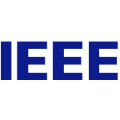"Search for" or "Navigate to"? When finding an object, the two choices always come up in our subconscious mind. Before seeing the target, we search for the target based on experience. After seeing the target, we remember the target location and navigate to. However, recently methods in object navigation field almost only consider using object association to enhance "search for" phase while neglect the importance of "navigate to" phase. Therefore, this paper proposes the dual adaptive thinking (DAT) method to flexibly adjust the different thinking strategies at different navigation stages. Dual thinking includes search thinking with the object association ability and navigation thinking with the target location ability. To make the navigation thinking more effective, we design the target-oriented memory graph (TOMG) to store historical target information and the target-aware multi-scale aggregator (TAMSA) to encode the relative target position. We assess our methods on the AI2-Thor dataset. Compared with the state-of-the-art (SOTA) method, our method reports 10.8%, 21.5% and 15.7% increase in success rate (SR), success weighted by path length (SPL) and success weighted by navigation efficiency (SNE), respectively.
翻译:“ 搜索” 或“ 搜索”? 当找到一个对象时, 两种选择总是出现在我们的潜意识中。 在看到目标之前, 我们根据经验搜索目标。 在看到目标后, 我们记住目标位置和导航。 然而, 物体导航场最近的方法几乎只考虑使用对象关联来增强“ 搜索” 阶段, 忽略“ 搜索” 阶段的重要性 。 因此, 本文建议了两种适应性思维方法, 在不同导航阶段灵活调整不同的思维策略。 双向思维包括搜索思维, 与对象关联能力和导航思维一起, 与目标定位能力一起进行。 为了提高导航思维的有效性, 我们设计了面向目标的记忆图( TOMG), 以存储历史目标信息, 以及目标认知多尺度的多尺度聚合器( TAMSA) 来编码相对目标位置 。 我们评估了 AI2- Thor 数据集的方法。 与状态( SOTA) 方法相比, 我们的方法报告10.8%, 21.5% 和15.7% 成功率(SR), 成功率按路径长度加权加权( SPL) 和成功 。


